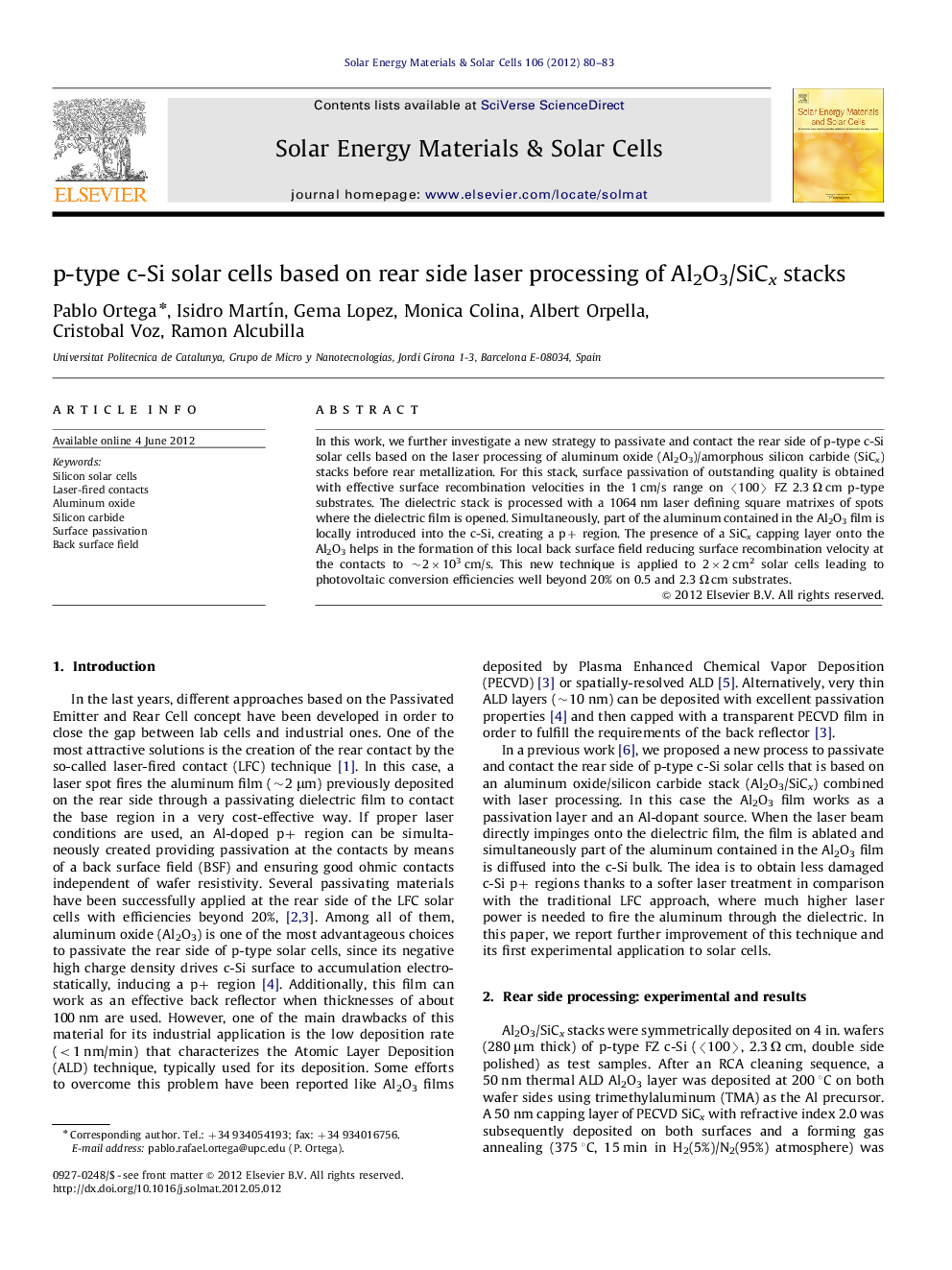| Article ID | Journal | Published Year | Pages | File Type |
|---|---|---|---|---|
| 78361 | Solar Energy Materials and Solar Cells | 2012 | 4 Pages |
In this work, we further investigate a new strategy to passivate and contact the rear side of p-type c-Si solar cells based on the laser processing of aluminum oxide (Al2O3)/amorphous silicon carbide (SiCx) stacks before rear metallization. For this stack, surface passivation of outstanding quality is obtained with effective surface recombination velocities in the 1 cm/s range on 〈100〉 FZ 2.3 Ω cm p-type substrates. The dielectric stack is processed with a 1064 nm laser defining square matrixes of spots where the dielectric film is opened. Simultaneously, part of the aluminum contained in the Al2O3 film is locally introduced into the c-Si, creating a p+ region. The presence of a SiCx capping layer onto the Al2O3 helps in the formation of this local back surface field reducing surface recombination velocity at the contacts to ∼2×103 cm/s. This new technique is applied to 2×2 cm2 solar cells leading to photovoltaic conversion efficiencies well beyond 20% on 0.5 and 2.3 Ω cm substrates.
Graphical abstractFigure optionsDownload full-size imageDownload as PowerPoint slideHighlights► A new strategy to process the rear side of c-Si(p) solar cells has been explored. ► This approach is based on laser processing of Al2O3/SiCx stacks. ► An outstanding surface passivation has been reported for these stacks. ► A back surface field effect has been confirmed in our laser-fired contacts. ► Fabricated solar cells exhibit photovoltaic efficiencies well beyond 20%.
